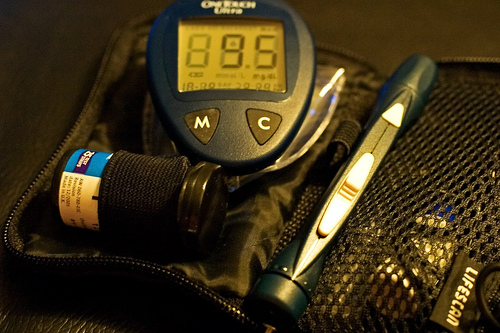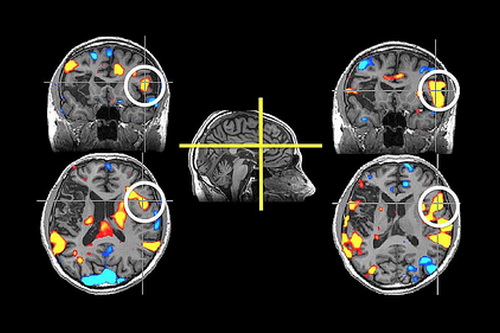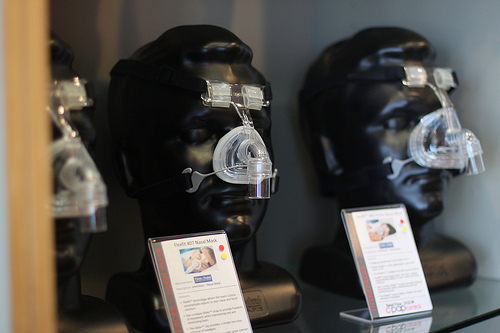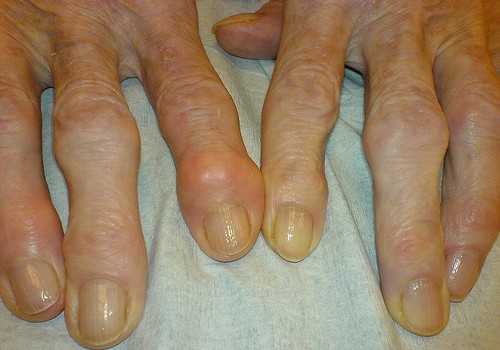
How Can You Tell If You Weigh Too Much?
Being “overweight” means having more body fat than required for a healthy body. Although or total body weight is not solely influenced by our body fat (it also includes our total body water and muscle mass), fat is the factor that is most commonly modified by our lifestyle changes (unhealthy diets, sedentary lifestyle, etc.). There are a couple of techniques used to assess whether or not someone is overweight. First, you could start by climbing on a scale and measuring your weight! In clinics and hospitals for instance, the Body Mass Index (BMI) – relation between your weight and your height – is commonly measured, and a normal BMI ranges from 18.5 to 25.
- Important notification about information and brand names used in this slideshow!
- Photo courtesy of Glenn by Flickr : www.flickr.com/photos/gahjr2000/111706770/
- win.niddk.nih.gov/publications/health_risks.htm
- http://www.nhlbi.nih.gov/health/health-topics/topics/obe/risks.html
- http://www.webmd.com/cholesterol-management/obesity-health-risks

Who is at the Greatest Risk?
Being overweight is mostly attributed to a sedentary lifestyle. People who consume fatty meals (fast foods, fried products, etc.) and do not exercise are at a higher risk of being overweight, compared to the general population. Additionally, being overweight can also stem from genetic predisposition. In some families, the normal trend is “excess body mass” and this predisposes the upcoming generations to develop it as well. Also, note that even in families that are not genetically predisposed to being overweight, an unhealthy lifestyle that is passed on to other generations (by social learning) could also predispose them to being overweight. Other risk factors include insulin dependent diabetes mellitus (IDDM), hormonal imbalances, eating disorders (particularly binge-eating), poor nutrition, smoking cessation or other types of stress. About 64% of adults in the USA are considered to be overweight and obese, meaning that at least 64% of American adults are at risk of developing the health problems that follow.
- Important notification about information and brand names used in this slideshow!
- Photo courtesy of somenametoforget by Flickr : www.flickr.com/photos/somenametoforget/3270198491/

Heart Disease
The long standing relationship between obesity and heart disease is no secret to the majority of us. Obesity is a direct risk factor for developing coronary heart disease. The presence of excessive body fat leads to cholesterol accumulation in the blood vessels, including the coronary arteries that supply the heart. These cholesterol plaques – formed as a result of an inflammatory process – have the potential to clog the coronary arteries and obstruct blood flow to the heart, thus causing what we commonly know as a “heart attack”, and this is one of the most dangerous and life-threatening complications of being overweight or obese.
- Important notification about information and brand names used in this slideshow!
- Photo courtesy of roujo by Flickr : www.flickr.com/photos/tekmagika/453968211/

High Blood Pressure
The same mechanism applies here, as the one described for the development of heart attacks. In obese patients, cholesterol develops in the lining of the blood vessels, and following inflammatory reaction cholesterol plaques are form. Then, these plaques can progressively increase in size (depending on whether or not the obesity is managed), and the bigger they getr the more space they occupy within the blood vessels, causing progressive narrowing. In the worst case scenario, the lumen of the blood vessel is completely narrovwed, and blood flow to the corresponding organ is instantly interrupted (such as in a heart attack). And because blood is trying to flow through a narrow opening, the pressure against the blood must push increases, and that is how the patient develops “hypertension”.
- Important notification about information and brand names used in this slideshow!
- Photo courtesy of William Hartz by Flickr : www.flickr.com/photos/whartz/1298354794/

Type 2 Diabetes
Insulin Dependent Diabetes Mellitus (IDDM) is also a very well-known complication of obesity and overweight states. Normally, our body fat cells are responsive to insulin, and the body is regulated in such a way that a certain amount of insulin is released to trigger a response in all fat cells. The intended response is opening of glucose receptors and uptake of glucose, to decrease the total blood glucose level after a meal. In overweight and obese patients, there are simply too many fat cells to cater for, and not enough insulin receptors. As a result of that, the cells that are already expressing insulin receptors become even less sensitive to insulin, and this leads to a complication called insulin resistance. And when this happens, the cells are no more able to take up glucose, which leads to chronic increase in blood glucose levels, a condition known as Diabetes Mellitus. This type of Diabetes Mellitus is called “Insulin Dependent” because it can be corrected by administration of insulin or insulin-like compounds.
- Important notification about information and brand names used in this slideshow!
- Photo courtesy of sriram bala by Flickr : www.flickr.com/photos/sriram/1624759463/

Stroke
Just like cholesterol plaques can cause clogging of the heart vessels, the brain vessels can be occluded as well. Cerebral artery occlusion occurs when a cholesterol plaques is dislodged from the lining of the blood vessel and lands in the middle of a cerebral artery. But for such event to take place, the blood pressure of the person should be high enough to cause dislodging of the cholesterol plaque from its original position. This type of stroke is qualified as “ischemic”. This is why strokes commonly occur in people with high blood pressure. Additionally, a stroke can also occur due to the bursting of a cerebral artery ramification, still secondary to the high blood pressure. in that case, the stroke is said to be “hemorrhagic”.
- Important notification about information and brand names used in this slideshow!
- Photo courtesy of Intel Free Press by Flickr : www.flickr.com/photos/intelfreepress/8569033761/

Sleep Apnea
Obesity is also associated with sleep difficulties and breathing problems. For instance, because of fat accumulation in the tissues around the neck, it makes it hard for obese and overweight people to breathe. Increases in the risk of sleep apnea have been noticed both in children and adults, and it has been established that the development of sleep apnea in obese people further decreased their possibility to exercise. This can be either due to their fear of not being able to breathe while exercising, or of day-time sleepiness (since they wouldn’t have been able to sleep during the night). And interestingly enough, isolated sleep apnea could also predispose one to obesity, because if one is unable to sleep properly at night, his metabolism is impaired, and this leads to accumulation of nutrients and deranged hormonal levels. So to summarize, obesity can lead to sleep apnea, and possibly worsen it.
- Important notification about information and brand names used in this slideshow!
- Photo courtesy of Rachel Tayse by Flickr : www.flickr.com/photos/11921146@N03/6981941985/

Cancer
Obese and overweight patients are also at a higher risk of developing some cancers, compared to people with a normal weight. This is due to the fact that obesity alters hormonal levels, which play a role in increasing cancer risk. More specifically, women who are obese and overweight are at a higher risk of developing breast cancer. At least 17 000 cases of cancer are attributable to obesity and tobacco smoke, according to the World Health Organization. However, a very important distinction is made: in these women, the risk of developing breast cancer is increased by 30% after menopause in obese women, compared to healthy women.
- Important notification about information and brand names used in this slideshow!
- Photo courtesy of heacphotos by Flickr : www.flickr.com/photos/heacphotos/2677239885/

Osteoarthritis
Multiple studies have shown the association between obesity and osteoarthritis of the kip, knee, foot and hand. The mechanisms for this are not yet fully understood, but several hypotheses have been put in place. This association could be due to the fact that obesity is a low-grade inflammatory condition, and so the cytokines involved in inflammation secondary to obesity could be the same ones as those involved in osteoarthritis. Researchers also suspect that some genetic predisposition might play a role, but no conclusive results have been established for now. However, improvement of osteoarthritis in previously obese people who lost weight strongly reinforces the correlation between obesity and osteoarthritis.
- Important notification about information and brand names used in this slideshow!
- Photo courtesy of MyArthritis by Flickr : www.flickr.com/photos/myarthritis/8384889861/

How to Lower your Risk of Health complications?
Lifestyle changes are never easy, but in this situation, they are the best way to decrease one’s risk of health complications secondary to obesity. In the majority of cases, a sedentary lifestyle is what got us there (in obesity) in the first place, so it would only be logical to aim at correcting it to prevent further complications. If you haven’t started exercising yet, now would be a great time to take the initiative. Organize a regular exercise schedule that works best with your daily routine (work, school, extracurricular activities). Also, consult a nutritionist for all the adjustments that need to be done in your diet. You will certainly need to get rid of some food products and replace them with others, but the good thing is, the change is going to be progressive. And it is definitely going to be worth your while.
- Important notification about information and brand names used in this slideshow!
- Photo courtesy of heacphotos by Flickr : www.flickr.com/photos/heacphotos/2677280059/



























Your thoughts on this
Loading...